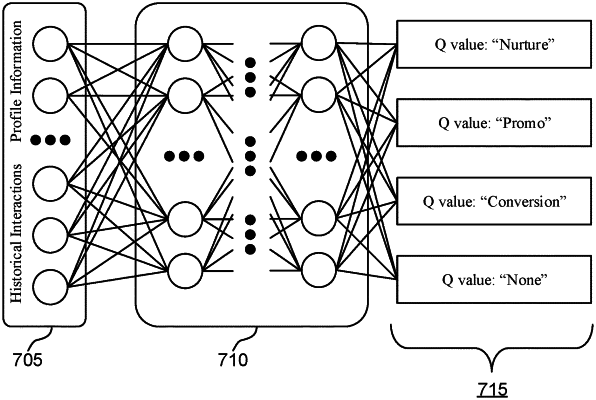| CPC G06Q 30/0239 (2013.01) [G06F 18/295 (2023.01); G06N 3/08 (2013.01); G06N 20/00 (2019.01); G06Q 10/107 (2013.01)] | 13 Claims |

|
9. A system comprising:
a database storing user information for a plurality of users, the user information including user interaction data indicating an interest level of a user at a point in a user journey;
a message generation component configured to generate messages having a message type selected from a plurality of message types, wherein the plurality of message types correspond to interest levels representing the user journey;
a decision making component comprising a neural network that is trained based on user responses to the plurality of message types, wherein the neural network represents a policy function of a Markov Decision Process (MDP) model, and wherein an input to the neural network includes a state variable based on the user information, and an output of the neural network comprises a probability vector including a plurality of values corresponding to the plurality of message types, respectively;
a message transmission component configured to transmit a message to a user among the plurality of users determined by the decision making component; and
a data collection component configured to identify a user interaction in response to the transmitted message, update the user information based on the user interaction, and determine whether to transmit a subsequent message during a subsequent time period based on the updated user information, wherein:
the decision making component is further configured to:
identify a user subgroup for new behavior exploration;
determine that the customer belongs to the user subgroup;
identify a probability for a random delivery schedule based on the determination; and
identify a random message based at least in part on the probability;
and wherein the message transmission component is further configured to:
transmit the random message to the customer;
identify a result of the random message; and
update the neural network, the user information, or both based on the result.
|